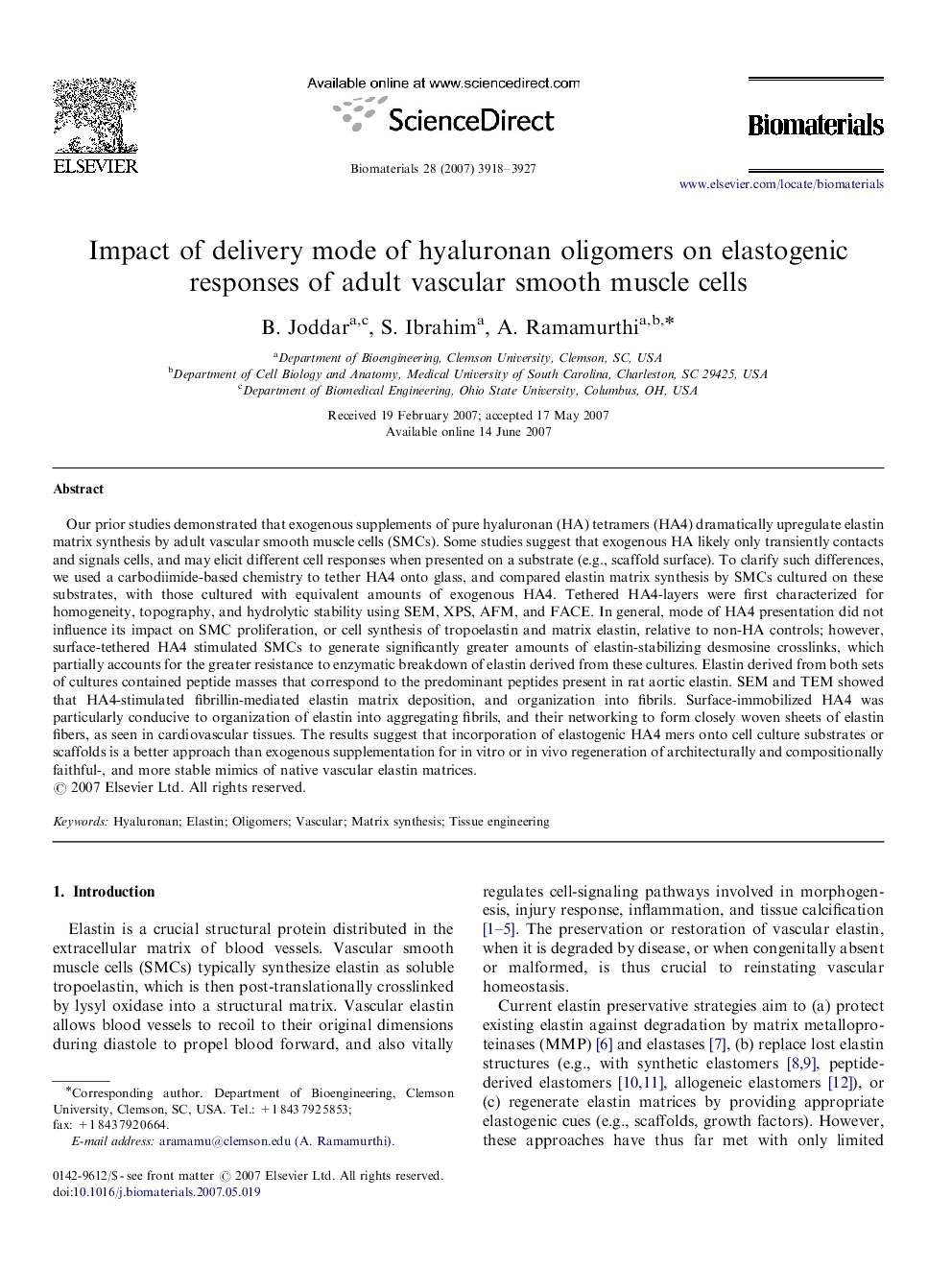| Article ID | Journal | Published Year | Pages | File Type |
|---|---|---|---|---|
| 10333 | Biomaterials | 2007 | 10 Pages |
Our prior studies demonstrated that exogenous supplements of pure hyaluronan (HA) tetramers (HA4) dramatically upregulate elastin matrix synthesis by adult vascular smooth muscle cells (SMCs). Some studies suggest that exogenous HA likely only transiently contacts and signals cells, and may elicit different cell responses when presented on a substrate (e.g., scaffold surface). To clarify such differences, we used a carbodiimide-based chemistry to tether HA4 onto glass, and compared elastin matrix synthesis by SMCs cultured on these substrates, with those cultured with equivalent amounts of exogenous HA4. Tethered HA4-layers were first characterized for homogeneity, topography, and hydrolytic stability using SEM, XPS, AFM, and FACE. In general, mode of HA4 presentation did not influence its impact on SMC proliferation, or cell synthesis of tropoelastin and matrix elastin, relative to non-HA controls; however, surface-tethered HA4 stimulated SMCs to generate significantly greater amounts of elastin-stabilizing desmosine crosslinks, which partially accounts for the greater resistance to enzymatic breakdown of elastin derived from these cultures. Elastin derived from both sets of cultures contained peptide masses that correspond to the predominant peptides present in rat aortic elastin. SEM and TEM showed that HA4-stimulated fibrillin-mediated elastin matrix deposition, and organization into fibrils. Surface-immobilized HA4 was particularly conducive to organization of elastin into aggregating fibrils, and their networking to form closely woven sheets of elastin fibers, as seen in cardiovascular tissues. The results suggest that incorporation of elastogenic HA4 mers onto cell culture substrates or scaffolds is a better approach than exogenous supplementation for in vitro or in vivo regeneration of architecturally and compositionally faithful-, and more stable mimics of native vascular elastin matrices.
